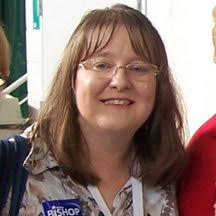EAST LANSING, Mich. (Michigan News Source) – In an effort to be inclusive, Michigan State University has published a 17-page “Inclusive Guide” on their website’s “MSU Brand Studio” page that outlines words and phrases that should and shouldn’t be used in storytelling which includes Christmas trees, females and bunnies.
The guide is listed alongside other information concerning the use of voice, tone & audience, information on their tagline and boilerplate text about the school. The guide is updated annually and includes “best practices for communications” in the areas of gender and sexuality, race and ethnicity, global identity and disability.
MORE NEWS: Know Your Rights? Saline Immigration Panel Loaded With Anti-ICE Sources.
The document says, “Michigan State University values communications practices that support belonging for all Spartans. In alignment with strategic efforts around diversity, equity and inclusion. The guide aligns with the MSU Editorial Style Guide and includes recommendations informing images, web content, speeches, events and more.”
In the beginning of the document, which talks about general practices, MSU says, “Use great care when writing about identity. This guide is not one size fits all and is meant to be applied on a case-by-case basis depending on tone, channel, audience and content. Often, language boils down to individual identity, which brings up the overarching principle of this guide: Consult with the individual to determine how they would like to be referred.”
It directs those following the guide to use language in accordance to the individual’s identity, avoiding generalizing identity groups, and avoiding the use of pejoratives. It also says to consider the origins of everyday language before freely using words and phrases in everyday communications – such as “cake walk,” “peanut gallery,” “tipping point” or “grandfather clause.”
The guide does, however, allow the consideration of having to use words and terms in certain circumstances. It says, “The purpose of the guide is to inform general communications and does not apply to academic, medical, legal or other specialized fields. Some terminology, like obesity, is specific to a disease, thus, recommendations to use alternative options do not apply to technical applications.” MSU also allows for established names and titles such as “Black Alumni.”
Although the guide has many pages of words and phrases the university doesn’t want used, it says that the list is not “comprehensive in scope” and is an ever-evolving and dynamic practice. The guide also doesn’t have any recommendations about “socioeconomic status, age, body type, veteran status, parent identity and incarcerated people, or land acknowledgment and land-grant identity and demographics, which may be included in the future.”
Terms to avoid on their list which the university has found to be offensive are plentiful and include: female, homosexual, closeted, transsexual, African, Blacks, Brown, ghetto, tribe, Michigan Native, powwow, sitting Indian style, bury the hatchet, frontier, pioneer, founder, hold down the fort, foreigner, alien, illegal immigrant, illegals, America, third world, oriental, terrorist, radical, devout, Islamist, merry, Christmas trees, wreaths, holly, bells, gifts, reindeer, bunnies, eggs, chicks, crazy, insane, psycho, senile, loony, the blind leading the blind, midget, special and substance abuse.
MORE NEWS: Consultant or Chairman? Dave Woodward’s Two Hats Draw Scrutiny.
Some of the resources used to compile the guide include the National Association to Advance Fat Acceptance, National Association of Black Journalists, Association of LGBTQ Journalists Style Guide, Harvard University and the National Center on Disability and Journalism.
Michigan State is not alone in their attempt to be what some call the “word police.” Many other University DEI departments have been developing their own list of offensive words to avoid including Stanford University, which has deemed “American” to be a harmful word.
